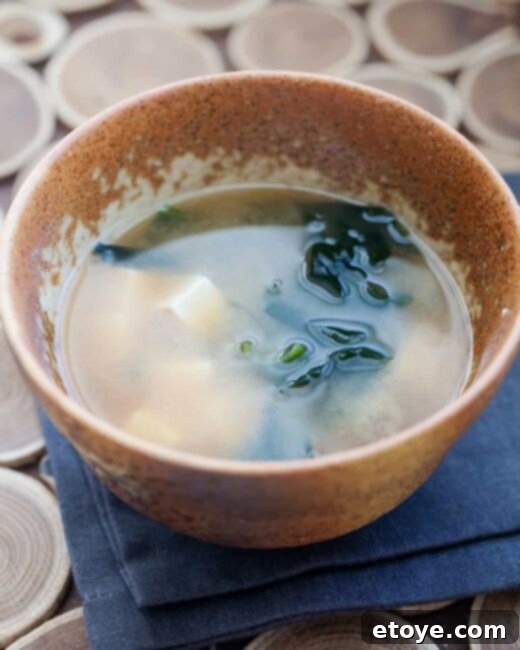Embark on a culinary journey to the heart of Japan with a simple yet profoundly comforting bowl of miso soup. Whether you’re seeking warmth on a chilly day, a light and healthy appetizer, or a nourishing pick-me-up, this iconic Japanese staple delivers a unique, savory flavor that soothes the soul. Far from a one-size-fits-all dish, homemade miso soup offers surprising versatility, allowing you to tailor it to your schedule and palate.
Even if you’re a newcomer to Japanese cooking, fear not. This comprehensive guide will walk you through four distinct miso soup recipes, ranging from incredibly fast to authentically traditional. You’ll discover how to create a delicious bowl in as little as one minute, or, for the more adventurous, delve into the art of crafting miso soup from scratch using homemade dashi broth and premium miso paste. We’ve got a perfect miso soup solution for every occasion and timeframe!
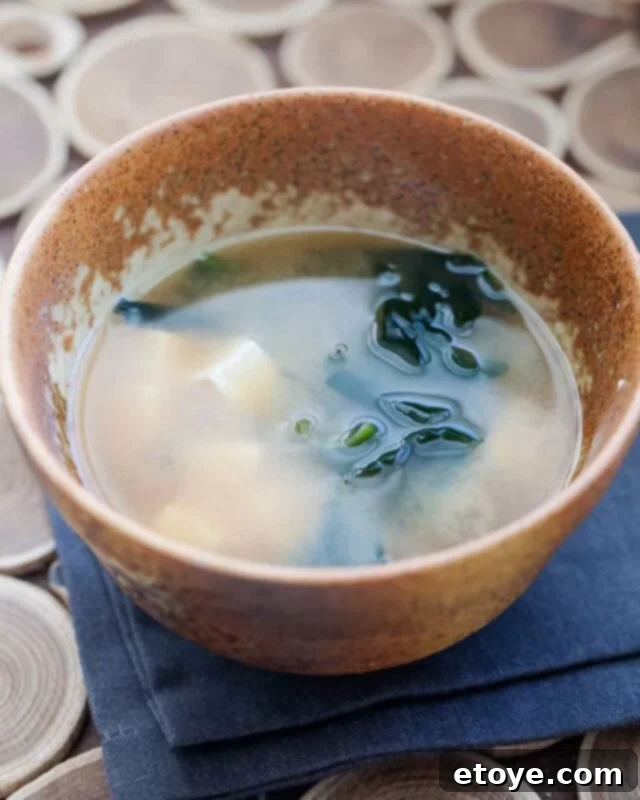
Why You’ll Love These Miso Soup Recipes
Miso soup is more than just a dish; it’s an experience, a cornerstone of Japanese cuisine known for its deep flavors and health-promoting properties. Our collection of recipes highlights exactly why it should become a regular in your kitchen.
- Unparalleled Customization: Take full command of your culinary experience. Choose from a super quick and easy miso soup recipe that relies on readily available ingredients for instant gratification, or challenge yourself with the traditional art of making miso soup from scratch, utilizing a rich variety of authentic components. This flexibility ensures there’s a miso soup for every skill level and time constraint.
- Refreshing & Delicious Flavor Profile: Each bowl of miso soup offers a harmonious blend of savory, slightly sweet, and earthy notes, culminating in a profoundly refreshing and delicious taste. The “umami” quality, often described as a pleasant savory taste, is at the forefront, leaving a satisfying warmth with every spoonful.
- Authentic Japanese Essence: Immerse yourself in the classic flavors that define Japanese cooking. From the delicate notes of dashi broth to the robust complexity of fermented miso paste, these recipes capture the true essence of traditional Japanese culinary artistry.
- Abundant Health Benefits: Beyond its incredible taste, miso soup is a powerhouse of nutrition. Thanks to the fermentation process that miso paste undergoes, it’s packed with beneficial probiotics. These live active cultures are known to support gut health, aid digestion, and may even boost your immune system, making every serving a step towards better well-being. Miso also contains essential minerals, vitamins, and amino acids, contributing to overall dietary richness.
- Dietary Versatility: Miso soup is naturally adaptable. Many recipes can be easily modified to be vegan (using kombu-based dashi and plant-based toppings) or gluten-free (ensure miso paste is made from rice or other gluten-free grains, not barley, and check other ingredients). This makes it an inclusive dish suitable for various dietary needs.
Essential Ingredients for Miso Soup
At its core, a truly authentic and flavorful miso soup relies on two fundamental components: dashi and miso paste. Understanding these ingredients is key to unlocking the true potential of this Japanese classic.
-
Dashi (pronounced DAH-shee): The Soul of Japanese Cuisine
Dashi is often referred to as the “soul” of Japanese cooking, forming the foundational broth for virtually every traditional Japanese soup, as well as many sauces and simmering dishes. It’s renowned for its delicate yet deeply savory umami flavor, providing a clean canvas upon which other ingredients can shine. Classic dashi is typically made from two main elements:- Kombu Kelp: A type of edible seaweed harvested primarily in Hokkaido, Japan. Kombu is rich in natural glutamates, which are responsible for its profound umami taste. When gently simmered, it imparts a subtle sweetness and a distinct ocean-like depth to the broth without being overtly fishy. Kombu dashi is also an excellent vegan base.
- Bonito Flakes (Katsuobushi): Thin shavings of smoked and dried skipjack tuna. Katsuobushi adds a smoky, savory, and slightly oceanic note to the dashi. The careful drying and smoking process concentrates its flavors, resulting in a complex umami profile.
For vegetarian or vegan dashi, kombu dashi (made solely from kombu) or shiitake mushroom dashi (made from dried shiitake mushrooms) are excellent alternatives that still provide a rich umami base.
-
Miso Paste: The Fermented Flavor Bomb
Miso is a traditional Japanese seasoning produced by fermenting soybeans with salt and a fungus called koji (Aspergillus oryzae), often combined with rice, barley, or other grains. This fermentation process yields a thick, savory, and umami-rich paste that varies in color and flavor depending on its ingredients and fermentation period. The fermentation process not only develops complex flavors but also introduces beneficial enzymes and probiotics, contributing to its health benefits.
Miso paste is incredibly versatile and can be used far beyond just soup. It’s a fantastic ingredient for creating robust miso ramen, flavorful salad dressings, and savory marinades (don’t miss trying our Miso Salmon recipe for an unforgettable meal). Its rich, fermented character adds depth and complexity to countless dishes.
Once you have your basic dashi and miso soup prepared, the possibilities for customization are endless. Enhance your bowl with various toppings to add texture, nutrition, and even more flavor. Popular additions include tender cubes of tofu (a classic pairing), vibrant green onions for a fresh bite, rehydrated wakame seaweed for its unique texture and nutrients, earthy shiitake mushrooms for added umami, delicate clams for a seafood twist, thinly sliced leeks, comforting noodles for a heartier meal, or any of your favorite seasonal vegetables like spinach or daikon radish. These toppings not only make the soup more visually appealing but also boost its nutritional value.

Instant Gratification: The 1-Minute Miso Soup
For those moments when time is of the essence but you still crave the soothing taste of miso soup, the instant variety comes to the rescue. This is the simplest and quickest way to enjoy miso soup, making it perfect for busy mornings, a quick lunch at the office, or a convenient snack when you need comfort in a cup.
Most instant miso soup packages contain individual servings, often featuring a powder mix or a paste packet, along with freeze-dried toppings like tofu, green onions, or seaweed. To prepare, simply open a packet, empty the contents into a bowl, and stir in hot water. In mere seconds, you’ll have a warm and satisfying bowl of soup ready to enjoy. It’s an ideal solution for a quick and wholesome meal without any fuss.
While brands like Kikkoman are widely recognized and easily accessible in most grocery stores, if you have access to an Asian market, particularly one specializing in Japanese ingredients, you might find even better options. Look for instant miso soup that includes individual miso paste packets, such as those from the Marukome brand. These paste-based instant soups generally offer a superior, more authentic flavor and richer texture compared to their powdered counterparts.

These larger instant miso soup sets are fantastic for stocking up your pantry. For instance, a package might contain 32 individual packets, each serving one person, or smaller packs with 5 servings. Many of these varieties also provide an assortment of different miso soup toppings and flavors within a single box, offering a delightful variety for your daily bowl and preventing flavor fatigue. The image above shows examples: the package on the left provides 32 individual servings with varied toppings, while the one on the right contains 5.
The specific package I often use contains 24 servings (as shown below). It comes with 24 individual miso paste packets (the smaller blue ones) and a selection of dried toppings like tofu, green onion, and seaweed. This variety ensures that each bowl feels a little different and exciting.

From personal experience, these miso paste packets offer a significantly richer and more authentic taste than the powdered versions often found from common brands. The paste retains more of the fresh miso flavor and creamy texture. When shopping for instant miso in Asian markets, you might encounter packages primarily in Japanese. A helpful tip for identifying paste-based versions: if the package feels relatively heavy and pliable, it likely contains miso paste packets. If it feels light and rigid, it’s more probable that it’s a powdered mix.
How to Make 1-Minute Miso Soup
- Heat 1 cup of water in a microwave-safe bowl for 1 minute, or until hot. Alternatively, use a kettle to boil water.
- Carefully open one packet of instant miso soup (whether it’s paste or powder) and add its contents to the hot water in your bowl.
- Stir thoroughly with a spoon or whisk until the miso paste or powder has completely dissolved and the soup is uniform in color. Enjoy immediately!
A Step Up: The 3-Minute Miso Soup
For a slightly more refined yet still incredibly fast miso soup experience, consider using miso paste that has dashi pre-mixed into it. This convenient product looks identical to regular miso paste, and you might not notice the difference until you read the label. This type of miso paste offers the perfect balance of speed and enhanced flavor, as it eliminates the need to prepare dashi separately.

Because the dashi (whether made from bonito or kombu) is already incorporated into the miso paste, all you need to do is whisk it into hot water to create a delicious basic miso soup. To further elevate your bowl, simply add classic toppings like diced tofu and dried wakame seaweed. The simplicity of this method makes it an ideal choice for a quick, wholesome meal that feels more homemade than instant packets.
Understanding Wakame: Your Essential Seaweed
Wakame (pronounced wah-KAH-meh) is the most commonly used seaweed in miso soups and Japanese salads. It’s a highly nutritious sea vegetable that adds a distinct oceanic flavor, a slightly slick texture, and vibrant green color to your dishes. Beyond its culinary uses, wakame is known for being a good source of iodine, calcium, and other minerals.
Wakame is typically sold in its dried form, making it incredibly easy to store in your pantry and prepare whenever needed. To rehydrate it, simply soak the dried wakame in water for a few minutes. You’ll be amazed at how much it expands and softens, transforming from brittle flakes into tender, leafy strands!
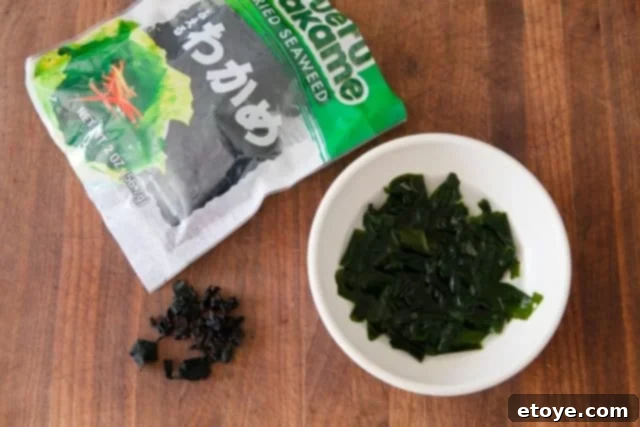
For optimal rehydration, soak dried wakame in cold water for about 5 minutes, or in hot water for just 1 minute. Once fully expanded, gently squeeze out any excess water before adding it to your miso soup. Remember, a little goes a long way! Just a small pinch of dried wakame per bowl is usually sufficient, as it will significantly increase in volume once rehydrated. The image below illustrates the impressive expansion of just one teaspoon of dried wakame, showcasing its remarkable ability to transform.
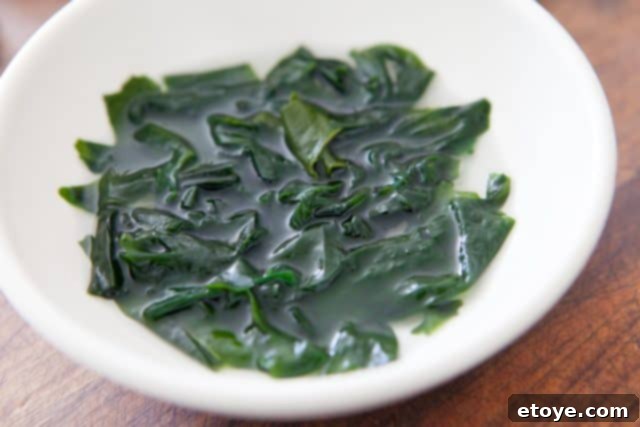
How to Make 3-Minute Miso Soup
- Begin by soaking your dried wakame in water for a few minutes until it rehydrates and expands. Drain thoroughly and gently squeeze out excess water, then set aside.
- While the wakame rehydrates, cut your tofu into small, bite-sized cubes.
- Boil water in a kettle or saucepan, then turn off the heat. Alternatively, microwave 1 cup of water for about 1 minute until hot.
- Measure your miso/dashi paste. A handy tool for this is a miso whisk or scoop, which often has different sized ends (e.g., 1 teaspoon and 1 tablespoon). For a light-tasting miso soup, 1 teaspoon per bowl is usually sufficient, but you can use 1 tablespoon for a stronger flavor, adjusting to your personal preference.
- Whisk the measured miso/dashi paste directly into the hot water until it is fully dissolved and creates a smooth broth.
- Add the diced tofu and drained wakame to the soup. Serve immediately and enjoy!
A specialized miso tool, such as this nifty miso whisk, is incredibly useful for both measuring and dissolving miso paste. One end typically measures 1 teaspoon, while the other measures 1 tablespoon, allowing for precise control over your soup’s flavor intensity. Another similar option can be found here on Amazon. For my preference, I typically use 1 teaspoon of miso/dashi paste for a single small bowl, as I enjoy a lighter flavor profile in my miso soup. This tool makes the process effortless and mess-free.
Using the miso whisk is simple: just press it into the miso paste and twist slightly. The perfect amount of miso will be scooped into the whisk, ready to be incorporated into your soup.
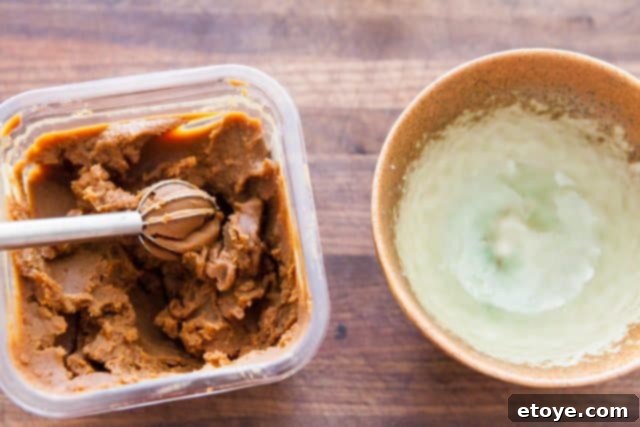
Then, simply whisk it into the hot water. The miso will smoothly dissolve, creating a creamy and flavorful broth without any clumps.

Finally, add your diced tofu and the rehydrated, drained wakame. These fresh additions complete the classic miso soup experience.
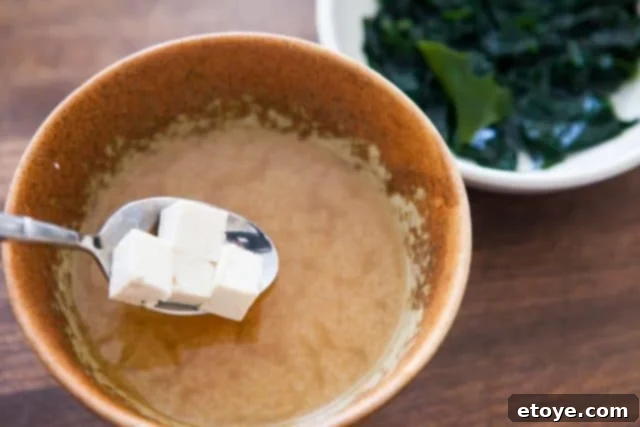
Voilà! Your delicious and quick miso soup is ready to be savored in just 3 minutes, offering a wonderful balance of speed and authentic flavor.
Enhanced Flavor in 4 Minutes: Using Instant Dashi Granules
If you’re looking for a quick miso soup that still captures a depth of flavor without the time commitment of making dashi from scratch, incorporating instant dashi granules is an excellent option. Think of instant dashi as Japan’s convenient answer to bouillon cubes or chicken broth powder—a concentrated burst of umami ready in an instant. This method provides a very flavorful base with minimal effort.
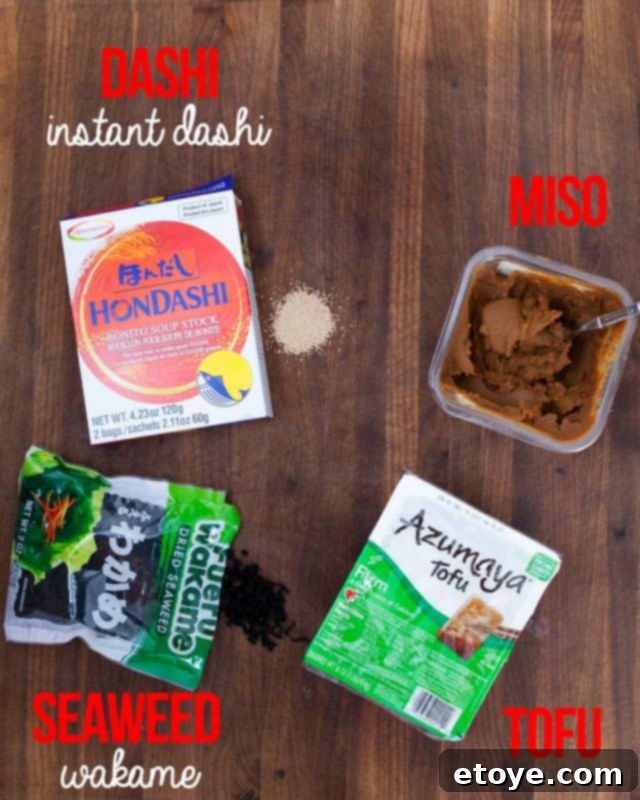
These granules are incredibly potent, so a very small amount is needed: typically, just 1 teaspoon for every 2 cups of water provides ample flavor. The most popular brand, Hondashi, is widely available in Asian markets and many well-stocked grocery stores.
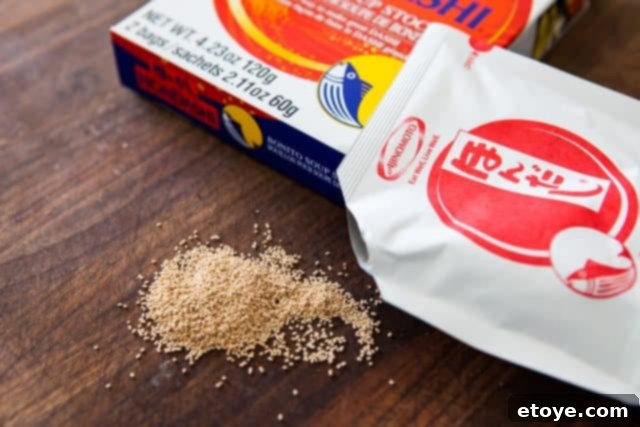
It’s worth noting that instant dashi often contains MSG (monosodium glutamate) as a flavor enhancer. While I am personally quite sensitive to MSG, I’ve found that using this particular brand, Hondashi, in the small quantities required for miso soup, does not cause any adverse effects for me. The balance of flavors is well-managed, and the overall amount of MSG per serving is minimal. If you have severe MSG sensitivities, you might prefer the 20-minute from-scratch method using kombu, which provides natural glutamates without added MSG.
Beyond Miso Soup: Other Uses for Instant Dashi
Instant dashi isn’t just for miso soup. It’s a fantastic flavor enhancer for a variety of dishes in Japanese and fusion cuisine. Try adding a teaspoon to the cooking water when boiling or blanching vegetables to give them an extra boost of savory depth. It’s especially delicious when added to the water for boiling edamame, transforming a simple snack into something truly addictive. You can also use it in stir-fries, noodle dishes, marinades, or any recipe that benefits from a quick hit of umami without altering the color or texture of your dish significantly.
How to Make 4-Minute Miso Soup
- Prepare your toppings: Cut tofu into small cubes and soak dried wakame in water until rehydrated, then drain thoroughly.
- Bring water to a boil, then immediately turn off the heat to prevent over-boiling the dashi and miso.
- Whisk in the instant dashi granules. Use approximately 1 teaspoon of instant dashi for every 2 cups of water, adjusting to your taste preference for umami depth.
- Next, whisk in your chosen miso paste. A general guideline is 2 tablespoons of miso paste for every 2 cups of water, but always taste and adjust for your desired saltiness and flavor strength. Remember not to boil the miso.
- Once the miso paste is fully dissolved, add the diced tofu and drained wakame to the pot. Serve hot and enjoy your flavorful, quick miso soup.
The Authentic Experience: 20-Minute Miso Soup from Scratch
For the most authentic and deeply flavorful miso soup, there’s nothing quite like preparing it from scratch, starting with homemade dashi. This method, while requiring a bit more time and attention, yields a broth of unparalleled delicacy and complexity, making it well worth the effort.
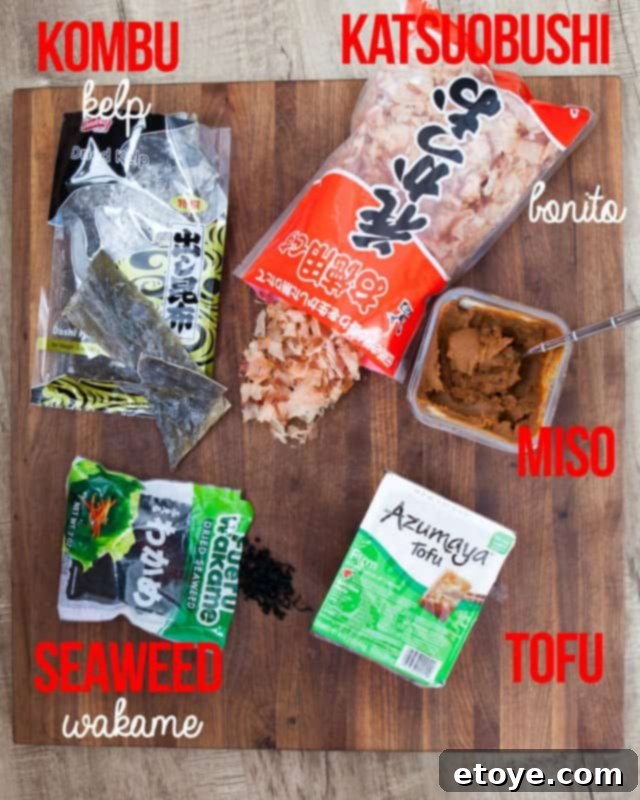
To create this foundational dashi, you’ll need two primary ingredients: kombu (large, dried kelp) and katsuobushi (shavings of smoked, dried skipjack tuna). These two elements work in harmony to produce the signature umami profile that defines traditional Japanese cuisine, creating a clean yet profound savory base.
Deep Dive into Kombu
Kombu is a nutrient-rich edible kelp, typically sold dried in large pieces or sheets. Primarily cultivated in the pristine waters around Hokkaido, Japan, as well as in Korea and China, kombu is revered for its ability to impart a profound umami flavor. This is due to its high concentration of natural glutamates, which provide a savory depth without the need for any added MSG. It also contributes a subtle marine sweetness and a unique aroma to the broth.
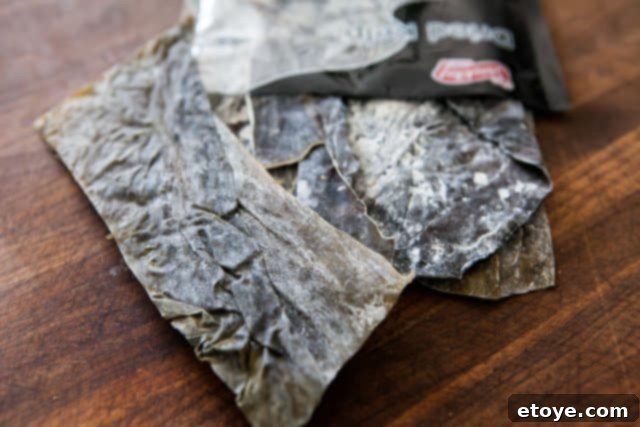
When preparing dashi, the size of the kombu piece matters for flavor intensity. For a pot of miso soup serving four people, a piece of kombu approximately 4×6 inches is ideal. Before adding it to water, gently wipe the surface of the kombu with a dry cloth or paper towel to remove any loose dirt or impurities. It’s crucial not to vigorously scrub away the white powdery substance you might see on the kombu; these are natural crystalized minerals, and they are essential contributors to the rich flavor and nutrients of your dashi stock. They are a sign of good quality kombu.

Unveiling Katsuobushi
Katsuobushi, also known as bonito flakes, is a unique Japanese ingredient made from skipjack tuna (bonito). The process involves meticulously smoking and drying the tuna until it becomes a very hard, wood-like block, known as katsuobushi-bushi. This block is then shaved into incredibly thin, feather-light pieces, often resembling wood shavings. These delicate flakes possess a distinctive smoky, savory, and slightly fishy aroma that is integral to authentic dashi, providing a layer of complexity that complements the kombu’s umami.

Crafting Dashi from Scratch: Step-by-Step
Making dashi is a foundational skill in Japanese cooking that is surprisingly simple, requiring patience and attention to detail rather than complex techniques.
-
Prepare the Kombu: Place a 4″ x 6″ piece of kombu into a saucepan with cool water (typically 4 cups for this recipe). Turn the heat to medium-low and slowly bring the water to a boil. Maintaining a medium-low heat is crucial to gently extract the kombu’s flavors without releasing any bitterness or making the broth cloudy.
Pro Tip: For an even deeper flavor extraction and richer umami, you can soak the kombu in cool water for 30 minutes, or even up to overnight, before heating. However, for a 20-minute miso soup, a couple of minutes of soaking while the water heats up is perfectly adequate to achieve a delicious result. -
Remove the Kombu: As soon as the water just begins to boil and you see small bubbles forming on the surface and along the edges of the pot, immediately remove the kombu from the pot.
Important: Do not boil the kombu! Over-boiling will release undesirable, stronger flavors and can make your dashi cloudy and somewhat bitter or overly “seaweedy.” The goal is a delicate, clear broth. - Add Katsuobushi: Once the kombu is removed, bring the water to a full, rolling boil. Add a generous handful of katsuobushi (approximately 1 ounce or 28g of bonito flakes) all at once to the boiling water.
-
Steep the Katsuobushi: Boil for just 60 seconds. Then, turn off the heat completely and let the bonito flakes steep, undisturbed, for about 10 minutes. This gentle steeping allows the flavors to infuse without over-extracting.
Caution: Boiling the bonito for too long will result in an overly strong, fishy-smelling dashi. It’s essential to let it steep off the heat. Do not stir the bonito flakes during this steeping process, as this can break them apart and make your dashi cloudy. You’ll notice the flakes naturally sink to the bottom of the pot after a few minutes, indicating they’ve released their flavor. -
Strain the Dashi: After steeping, carefully strain the katsuobushi flakes out of the broth. For the clearest dashi, it’s best to pour the liquid through a fine-mesh strainer lined with cheesecloth or a clean handkerchief. This method effectively captures all the small flakes, ensuring a pure, clear broth that is the hallmark of good dashi.
While you could use just a fine-mesh strainer, it might take longer and increase the risk of stirring up the bonito, which could make the dashi cloudy. -
Adding Miso Paste: Bring the prepared dashi to a gentle simmer, then immediately turn off the heat. This step is crucial. Now, whisk in the miso paste.
Critical Tip: Never boil miso paste! Boiling high heat will destroy the beneficial probiotics (live active cultures) found in miso and can also give the soup a gritty texture and a less appealing flavor. The ideal temperature for adding miso is just below boiling point.
For a soup serving four people (using 4 cups of dashi), I typically use about 3 tablespoons of miso paste. If you don’t have a specialized miso whisk, a regular whisk works perfectly fine. Don’t worry too much about being exact at first; you can always taste the soup and add a little more miso if you prefer a stronger flavor. - Final Touches and Serving: Once all the miso has dissolved, you have two options for adding your toppings. You can either add diced tofu (about 4 ounces) and rehydrated wakame (about 1 tablespoon dried) directly to the pot, allowing them to warm through gently. Alternatively, for a more elegant presentation, place these ingredients into individual serving bowls before ladling the hot miso soup over them. Garnish with fresh green onions for an extra touch of flavor and color.


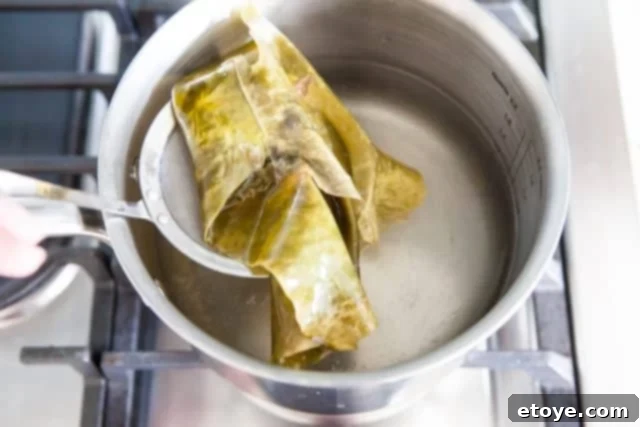
Don’t discard the used kombu! You can place it on a clean plate to dry and reuse it to make a lighter, “secondary” dashi (often called nibandashi), or even cut it into strips and eat it as a nutritious snack. Kombu remains packed with flavor and nutrients even after its initial use.

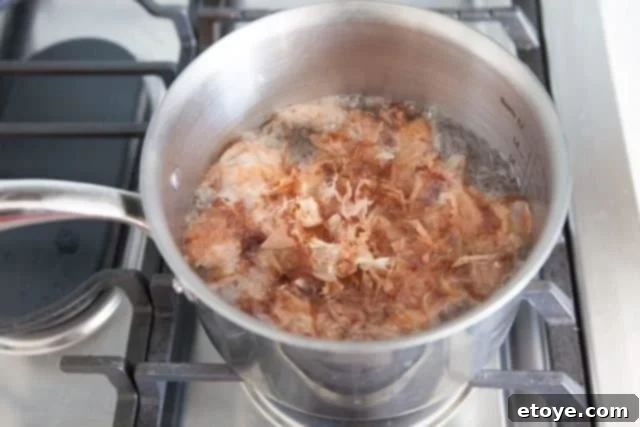
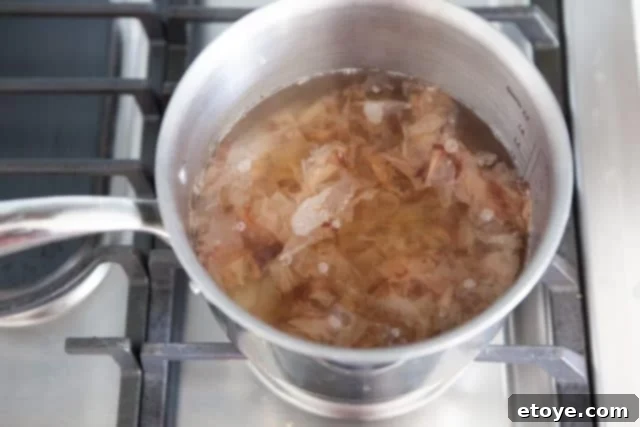
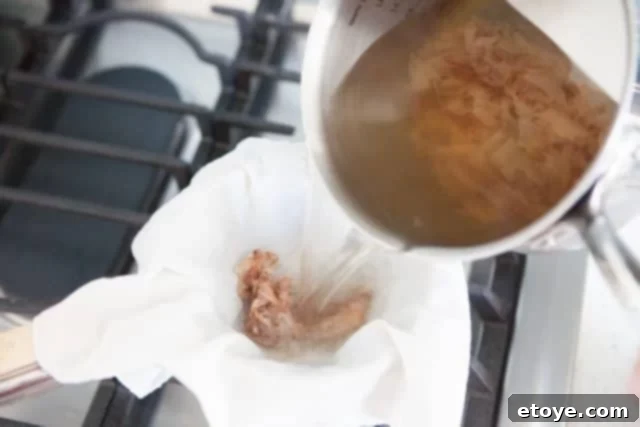
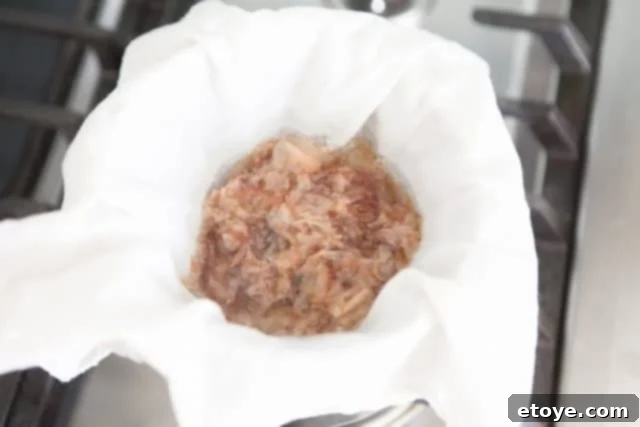
Similar to the kombu, the “spent” katsuobushi can also be reused. Along with the used kombu, you can simmer them again for about 10 minutes to create a lighter, “secondary dashi,” which is perfect for various Japanese dishes where a subtle dashi flavor is desired, such as simmering vegetables or making tamagoyaki.
Congratulations! Your perfectly crafted homemade dashi is now complete and ready to form the base of your miso soup, providing a truly authentic flavor foundation.


Whisk the miso paste directly into the warm dashi stock until it is completely dissolved and the soup has a uniform consistency. Ensure there are no lumps of paste remaining.
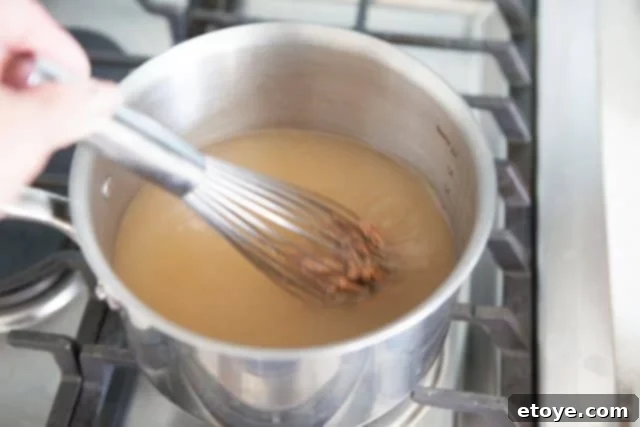


Serve your freshly made miso soup hot and savor the authentic, nuanced flavors of Japan that only a scratch-made broth can provide!
Exploring the World of Miso Paste Varieties
The type of miso paste you choose significantly impacts the final flavor of your soup. Miso pastes are broadly categorized into three main types, typically distinguished by their color, fermentation period, and the type of grain (koji) used in combination with soybeans. These range from the mildest to the strongest in flavor, offering a spectrum of culinary possibilities.
- White Miso (Shiro Miso): This is the mildest and often sweetest form of miso, characterized by its pale yellow or white color. Shiro miso is made from fermented soybeans and a higher proportion of rice koji, resulting in a shorter fermentation period. Its light color reflects its delicate flavor, making it a versatile choice for a wide range of dishes, including lighter soups, delicate dressings, marinades for fish or chicken, and even desserts where a subtle umami is desired. It’s an excellent choice for those new to miso.
- Yellow Miso (Shinsu Miso): With a fermentation period longer than white miso, yellow miso typically combines soybeans with barley or a mix of barley and rice koji. It has a slightly earthier and saltier profile than shiro miso, offering a balanced and medium-strength flavor. Shinsu miso is a versatile all-purpose miso that works well in most miso soup recipes, heartier marinades, and stir-fries, providing a good balance of sweet and savory notes.
- Red Miso (Aka Miso): As the name suggests, red miso has a deeper, reddish-brown color, indicative of its longer fermentation period—sometimes up to several years. It’s typically made with soybeans and a higher percentage of barley koji. Aka miso boasts the strongest, saltiest, and most robust flavor among the three, with a pungent umami that stands up well in rich stews, glazes for meats, robust marinades, and dishes where a powerful depth of flavor is desired. It’s often used sparingly due to its intensity.
My personal preference often leans towards white miso, or shiro miso. Its delicate, lighter flavor, with less saltiness compared to other varieties, complements many dishes beautifully without overpowering them. We frequently use it in our highly-rated Miso Salmon recipe for its subtle enhancement that brings out the best in the fish. I often find red miso to be a bit too intense for my palate for everyday soup, though it certainly has its place in specific culinary applications where its bold flavor is intended to be the star.
Beyond traditional Japanese noodle soups, I’ve discovered that a generous tablespoon of miso paste, especially white miso, is a natural “umami-master” that can revolutionize almost any soup or savory dish. It imparts a savory, salty, and subtly sweet flavor boost that elevates the entire dish! (For a surprising twist that will impress, try adding it to your mashed potatoes—you won’t regret the added depth and complexity!)
As mentioned in our 3-minute recipe section, some miso pastes come with dashi already incorporated into the paste for ultimate convenience. When purchasing these, carefully check the packaging for terms like:
- Seasoned Miso
- Miso with Bonito
- Miso with Dashi
Most miso paste available in stores is sold in convenient plastic tubs or flexible plastic bags. I generally prefer the tubs for ease of storage and access. Miso paste is a fermented product and has a good shelf life; it can be stored in the refrigerator for up to 6 months without losing its quality or flavor, often even longer.

To ensure your miso paste stays fresh and prevents it from drying out or developing a crust on the surface, always press a layer of plastic wrap directly onto the surface of the miso before sealing the container with its lid. This creates an airtight barrier that preserves its texture, moisture, and flavor.

Alternatively, if your miso comes in a plastic bag, transfer it to an airtight container before refrigerating. Stored properly in the refrigerator, miso paste should easily last for about 6 months (and often longer if sealed well), offering you plenty of opportunities to enjoy its rich, savory goodness in your cooking.

Top Tips for Perfect Miso Soup Every Time
Mastering miso soup is simple with a few key insights and techniques that will ensure a delicious and authentic bowl every time:
- Choose Your Miso Wisely: Remember the three main categories of miso paste—White, Yellow, and Red—which vary from mildest to strongest. White (shiro) miso offers a delicate, sweet flavor, perfect for lighter soups and dressings. Yellow (shinsu) miso provides a balanced, earthy taste, suitable for most recipes. Red (aka) miso delivers a robust, salty punch, ideal for heartier applications. Experiment to find your favorite, and don’t be afraid to blend different types for a more complex flavor profile!
- Proper Miso Storage: To extend the life of your miso paste and maintain its freshness, always store it in an airtight container in the refrigerator. Crucially, press plastic wrap directly onto the surface of the paste before sealing to prevent it from drying out and oxidizing. Properly stored, miso can last up to 6 months or even longer.
- Reusing Dashi Ingredients: Don’t discard your used kombu and katsuobushi after making primary dashi! These ingredients can be reused to create a “secondary dashi,” a lighter-tasting broth that’s excellent for other Japanese dishes where a more subtle umami is desired, such as poaching vegetables or making savory custards. Simply simmer the used kombu and katsuobushi in fresh water for about 10 minutes, then strain.
- The Power of Kombu: When making dashi from scratch with kombu, you harness its natural glutamates, which are powerful flavor enhancers. This means you won’t need to add any MSG to achieve a rich, savory broth, relying instead on the inherent goodness of whole ingredients.
- Never Boil Miso: This is perhaps the most important rule. To preserve the delicate flavor and beneficial probiotics (live active cultures) in miso paste, always whisk it into your dashi after the heat has been turned off and the broth is no longer boiling. High heat can destroy the probiotics, diminish the subtle flavors, and lead to a less desirable gritty texture. The ideal temperature for dissolving miso is just below boiling point.
- Taste and Adjust: Miso pastes vary widely in saltiness and intensity. Always taste your soup before serving and adjust the amount of miso paste to your personal preference. It’s easier to add more than to dilute an overly salty soup.
- Quality Ingredients Matter: While quick methods are convenient, using high-quality miso paste and fresh, good-condition dashi ingredients (kombu, katsuobushi) will always yield the most superior flavor.
Expand Your Culinary Horizons with Miso
Miso paste is an incredibly versatile ingredient that can add depth, umami, and a unique savory kick to a wide array of dishes beyond just soup. Here are some other delicious recipes where miso truly shines, demonstrating its adaptability in diverse culinary applications:
- Miso Salmon
- Miso Almond Sauce (fantastic as a dressing, dipping sauce, or tossed with noodles)
- Chicken Salad with Sesame Miso Dressing
- Miso Butter Shrimp Appetizer
- Rachael’s Gyoza
- Japanese Noodles with Shimeji Mushroom
- Grilled Miso Tenderloin
- Sake Miso Marinated Butterfish
We hope you enjoy exploring the wonderful world of miso soup and beyond! Have you tried any of these miso soup recipes or other dishes using miso paste? We’d love to hear about your experiences! Feel free to leave a star rating and share your thoughts in the comments section below. Your feedback helps us and other home cooks discover new favorites.
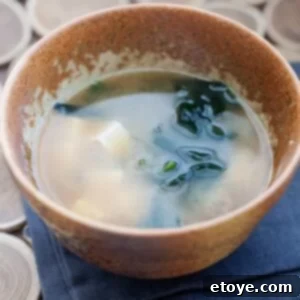
Miso Soup from Scratch
Author: Jaden
This is the recipe to make miso soup with homemade dashi.
Rating: 5 out of 5 stars (based on 2 votes)
Print Recipe |
Pin Recipe
Recipe Details
- Prep Time: 5 mins
- Cook Time: 15 mins
- Total Time: 20 mins
- Course: Side Dish
- Cuisine: Japanese
- Servings: 4 people
- Calories: 67 kcal
Ingredients
- 4 cups water
- 1 piece kombu (4″x6″ piece kelp)
- 1 ounce katsuobushi (bonito flakes)
- 3 tablespoon miso paste
- 4 ounces tofu
- 1 tablespoon dried wakame (seaweed)
Instructions
- Wipe the kombu clean with a paper towel. Add the kombu and water to a sauce pan. Bring to a boil over medium-low heat. When water just begins to boil, remove the kombu.
- Bring the kombu water to full boil. Add the katsuobushi all at once. Boil for 60 seconds. Turn heat off and let sit, undisturbed for 10 minutes.
- In the meantime, dice the tofu. Soak dried wakame in water until expanded, then drain and discard water.
- After steeping katsuobushi, the flakes will sink to the bottom of the pot. Strain the katsuobushi through cheesecloth.
- Return dashi to a simmer and immediately turn off heat. Whisk in miso paste. When miso has fully dissolved, add tofu and wakame.
Nutrition
- Calories: 67kcal
- Carbohydrates: 4g
- Protein: 8g
- Fat: 1g
- Cholesterol: 4mg
- Sodium: 529mg
- Potassium: 143mg
- Sugar: 1g
- Calcium: 24mg
- Iron: 0.6mg
Tried this recipe? Let us know how it was!
